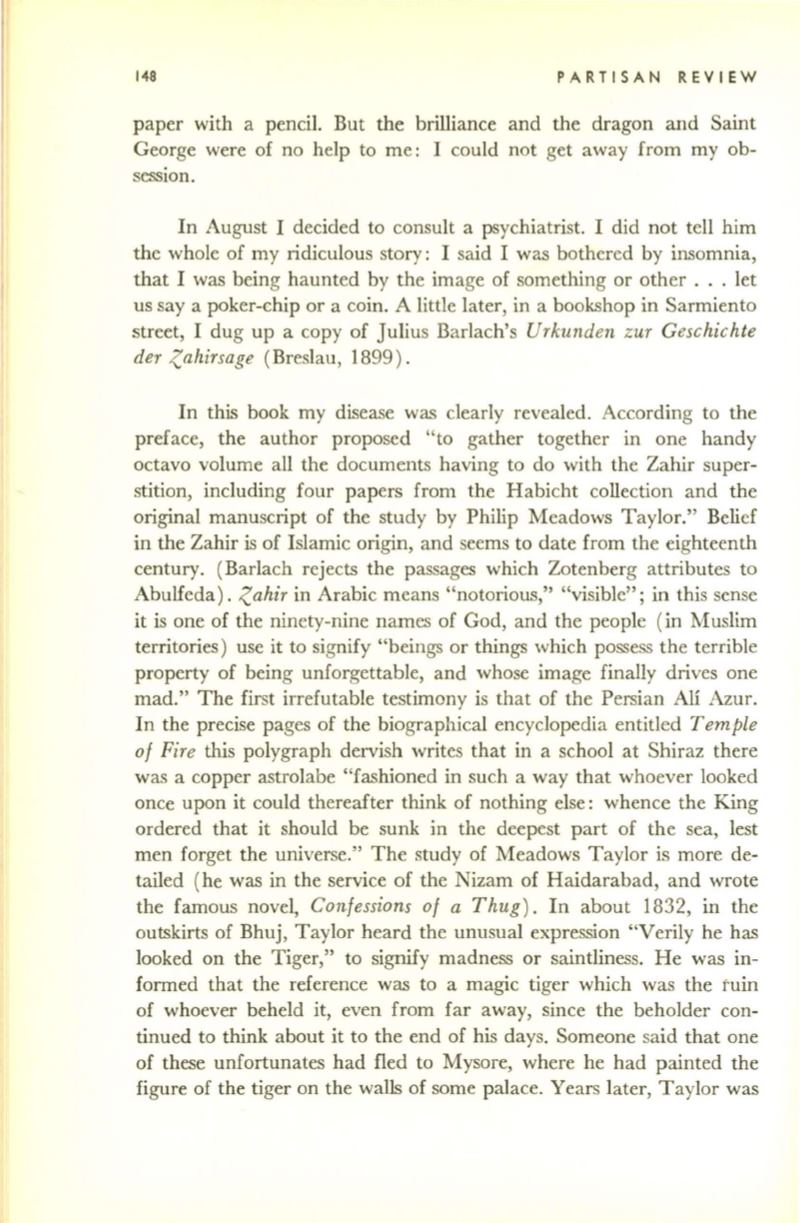
148
PARTISAN REVIEW
paper with a pencil. But the brilliance and the dragon and Saint
George were of no help to me: I could not get away from my ob–
session.
In August I decided to consult a psychiatrist. I did not tell him
the whole of my ridiculous story: I said I was bothered by insomnia,
that I was being haunted by the image of something or other ... let
us say a poker-chip or a coin. A little later, in a bookshop in Sarmiento
street, I dug up a copy of Julius Barlach's
Urkunden zur Geschichte
der
Z
ahirsage
(Breslau, 1899).
In this book my disease was clearly revealed. According to the
preface, the author proposed "to gather together in one handy
octavo volume all the documents having to do with the Zahir super–
stition, including four papers from the Habicht collection and the
original manuscript of the study by Philip Meadows Taylor." Belief
in the Zahir is of Islamic origin, and seems to date from the eighteenth
century. (Barlach rejects the passages which Zotenberg attributes to
Abulfeda).
Zahir
in Arabic means "notorious," "visible"; in this sense
it is one of the ninety-nine names of God, and the people (in Muslim
territories) use it to signify "beings or things which possess the terrible
property of being unforgettable, and whose image finally drives one
mad." The first irrefutable testimony is that of the Persian Ali Azur.
In the precise pages of the biographical encyclopedia entitled
Temple
of Fire
this polygraph dervish writes that in a school at Shiraz there
was a copper astrolabe "fashioned in such a way that whoever looked
once upon it could thereafter think of nothing else: whence the King
ordered that it should be sunk in the deepest part of the sea, lest
men forget the universe." The study of Meadows Taylor is more de–
tailed (he was in the service of the Nizam of Haidarabad, and wrote
the famous novel,
Confessions of a Thug).
In about 1832, in the
outskirts of Bhuj, Taylor heard the unusual expression "Verily he has
looked on the Tiger," to signify madness or saintliness. He was in–
formed that the reference was to a magic tiger which was the f'uin
of whoever beheld it, even from far away, since the beholder con–
tinued to think about it to the end of his days. Someone said that one
of these unfortunates had fled to Mysore, where he had painted the
figure of the tiger on the walls of some palace. Years later, Taylor was


